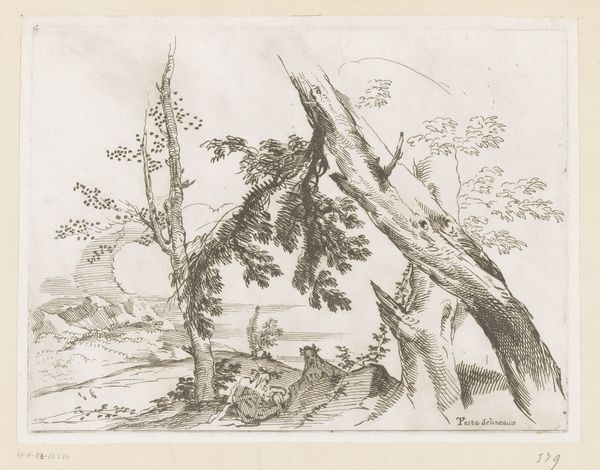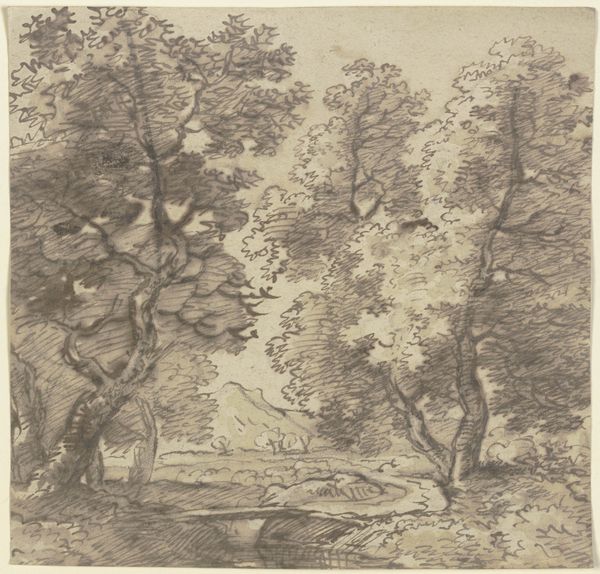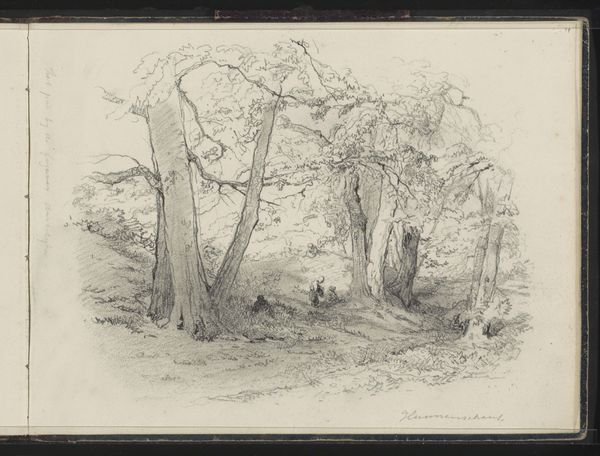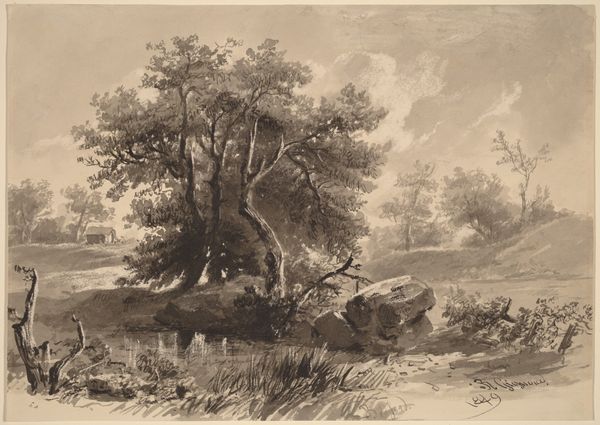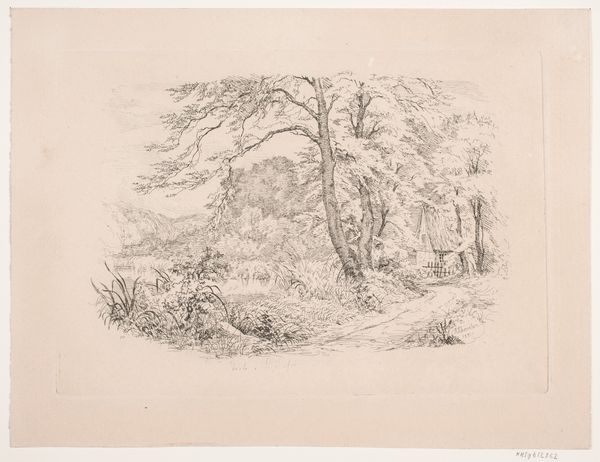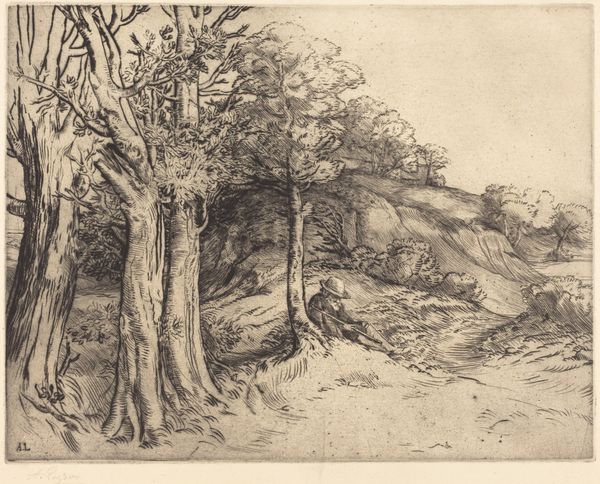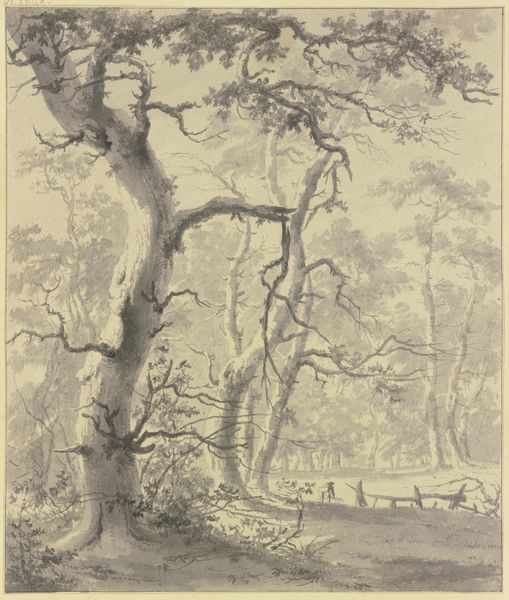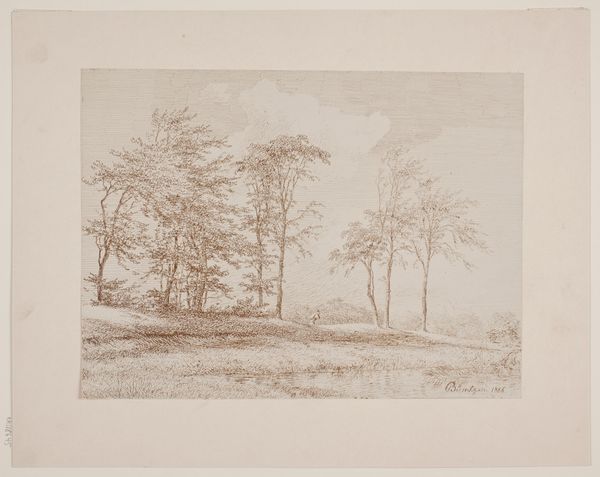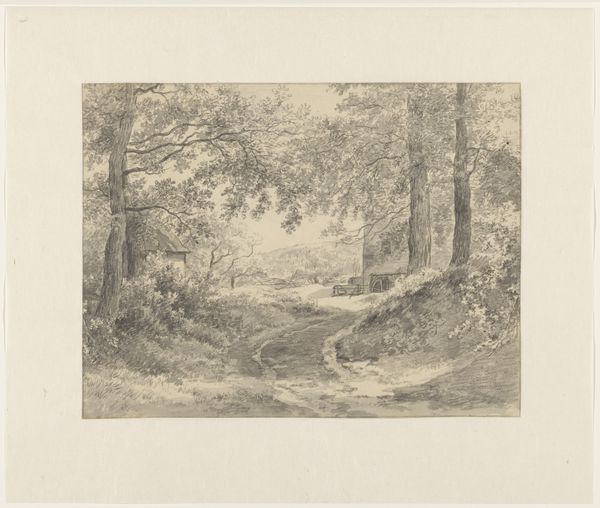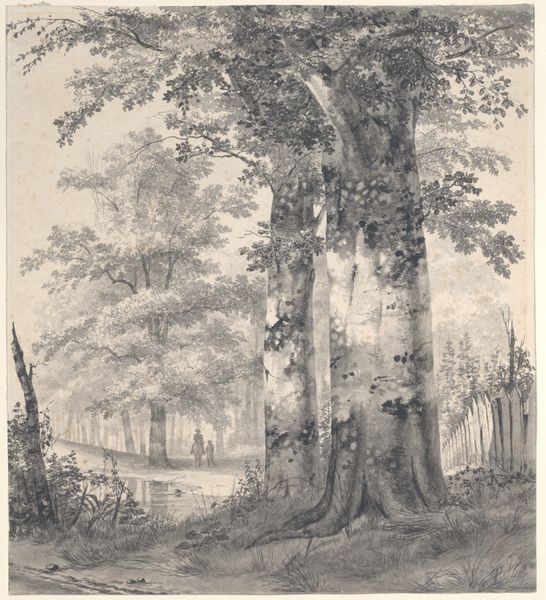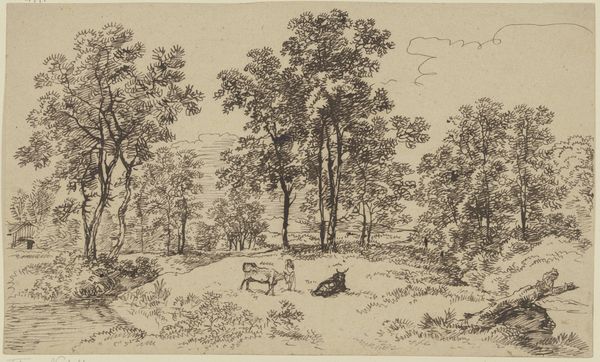
drawing, plein-air, pencil
#
drawing
#
plein-air
#
pencil sketch
#
landscape
#
pencil
#
realism
Dimensions: image (irregular): 23.5 × 33.02 cm (9 1/4 × 13 in.) sheet: 28.89 × 39.05 cm (11 3/8 × 15 3/8 in.)
Copyright: National Gallery of Art: CC0 1.0
Curator: John Singer Sargent's 1871 pencil drawing, "Forest, Ramsau, Germany," captures the intricate details of a dense woodland. What strikes you about it initially? Editor: It feels incredibly grounded, earthy, and almost palpable. The density of the pencil work near the base of the trees gives them an incredible weight and presence, almost as though they are emerging from the very earth. Curator: The artist really uses the pencil medium to his advantage. Consider the varying densities and textures he creates, and how that contributes to the structural composition. Note how the foreground, rendered with heavier, confident strokes, establishes a clear contrast to the lighter, more ethereal background. This depth, achieved through tonal variation, gives the work a remarkable sense of spatial recession, pulling the eye deep into the forest interior. Editor: Absolutely. I’m interested in what the materiality of pencil suggests about immediacy, portability, and perhaps the social context of plein-air drawing. Were such drawings considered disposable exercises or saleable artworks, and how did they function in relation to Sargent's larger practice as a painter for elite patrons? Curator: These drawings served multiple purposes. Certainly, they provided crucial studies for larger paintings. But looking closely, we can appreciate the care with which Sargent delineates individual leaves and the textures of the bark. It elevates this work beyond a mere sketch. He focuses intently on details and surface. This reminds us of his dedication to observational exactitude. Editor: It makes me think about the actual physical process. Consider Sargent, out in the German forest, contending with weather, insects, and the challenges of working en plein air, transforming organic matter – trees – with a manufactured material – the pencil which contains graphite mined and processed through intense human labour. This isn’t just a scene, it’s the residue of a real-world engagement. Curator: And consider the effect that that approach brings to the final piece! A deep understanding of his materials allowed Sargent to make deliberate artistic choices— the precision evident, for instance, when examining the complex relationships between light and shadow within the leaf canopy. It demonstrates his engagement with depicting atmosphere and form using only line and value. Editor: To view it, one would likely appreciate his dedication, skill, and final execution. Curator: It encourages us to look past just representation and toward what makes it so evocative. Editor: This image reminds us of the material processes, conditions, and implications embedded within seemingly simple representations of nature.
Comments
No comments
Be the first to comment and join the conversation on the ultimate creative platform.
